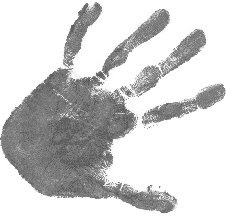roots
A friend of mine sent me a link to Shorpy – a 100 Year Old Photo Blog. Some amazing pics from long ago. Below is a picture of Shorpy Higginbotham, a grease boy in the mines. The pic here was taken in 1910; Shorpy’s the dude up front with the grease can. The site states disbelief that he was the 14 years old claimed. Probably was younger, and probably had to lie to get the work. Shorpy was killed at age 31 in a mining accident, crushed during a collapse. Too common.
(You can click on all the pics here and see larger views.)
How many people killed? In my area alone, where all the anthracite in the world is found, between 1870 and 1995 there have been 31,113 deaths recorded in mining accidents. There are only four years in that entire stretch - 1982, 1984, 1987, and 1992 - that recorded no deaths form mining accidents.
Anthracite is tougher to mine than bituminous. Anthracite coal seams are locked in the folded layers of rock that make up the geology of Northeastern Pennsylvania. The tunnels and shafts driven into the ground to mine anthracite coal were often at steep angles that forced miners to either crawl up mine tunnels and down others to get to the coal. Nasty.
Here’s another remarkable pic. Miners in 1908. This is what my family did, hence the title I have labeled on my forehead of, “coal trash.” Notice the drill bit used to loosen coal, which was then collected by shovel. The flame on the hat to see had to create an incredibly lonely presence in the darkness of the mine.
Another pic. January 1911. Shaft #6, Pennsylvania Coal Co. mine at South Pittston – my backyard. The caption reads that these miners are waiting for the cage to take them to the top. Not sure what to make of the notice the rails for the cart that seem to go through the elevator area. These guys are leaving behind the night of the mine to return to the day they left at the beginning of their shift.
Last pic from this site. Let’s just call it, “Coal Trash.”
Want to know what my grandfather’s lungs looked like from working the mines? The docs called it “Coal worker's pneumoconiosis.” We just called it, “Black Lung.” The pathogenesis: Coal dust that enters the lungs can neither be destroyed nor removed by the body. The particles are engulfed by resident alveolar or interstitial macrophages and remain in the lungs, residing in the connective tissue or pulmonary lymph nodes. Aggregations of carbon-laden macrophages can be visualized under a microscope as granular, black areas. In serious cases, the lung may grossly appear black. These aggregations can cause inflammation and fibrosis, as well as the formation of nodular legions within the lungs. The centers of dense legions may become necrotic due to ischemia, leading to large cavities within the lung. Sucks, eh?
The pathogenesis: Coal dust that enters the lungs can neither be destroyed nor removed by the body. The particles are engulfed by resident alveolar or interstitial macrophages and remain in the lungs, residing in the connective tissue or pulmonary lymph nodes. Aggregations of carbon-laden macrophages can be visualized under a microscope as granular, black areas. In serious cases, the lung may grossly appear black. These aggregations can cause inflammation and fibrosis, as well as the formation of nodular legions within the lungs. The centers of dense legions may become necrotic due to ischemia, leading to large cavities within the lung. Sucks, eh?
Remember that number above? 31,113 deaths in mining accidents? Didn’t include those that died outside the mine, suffocating on their personal stash of coal dust.
I need to make dinner.














No comments:
Post a Comment